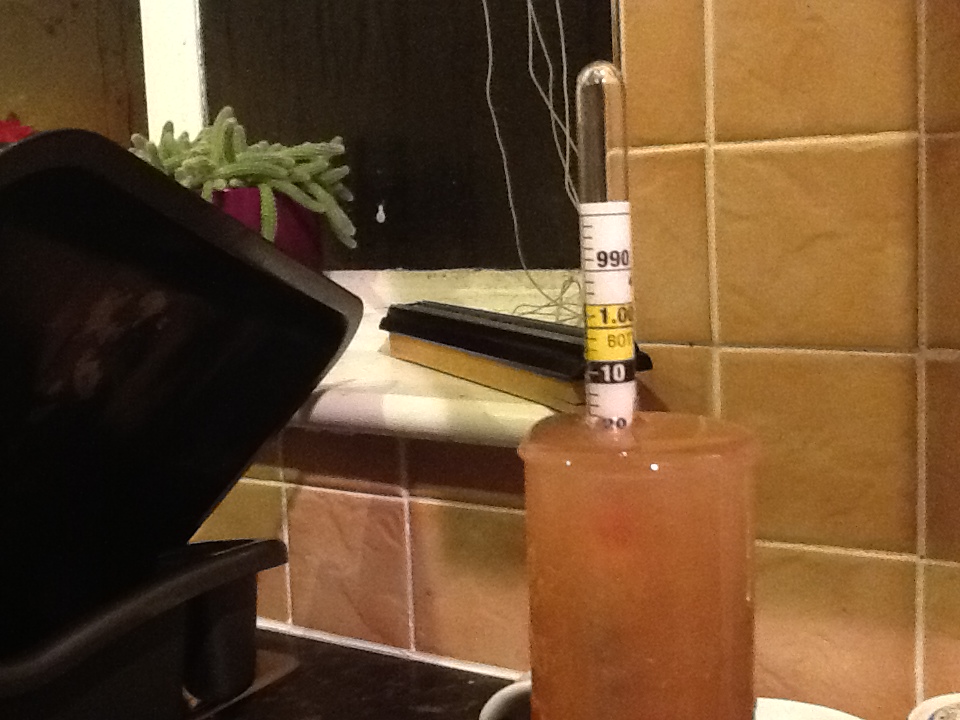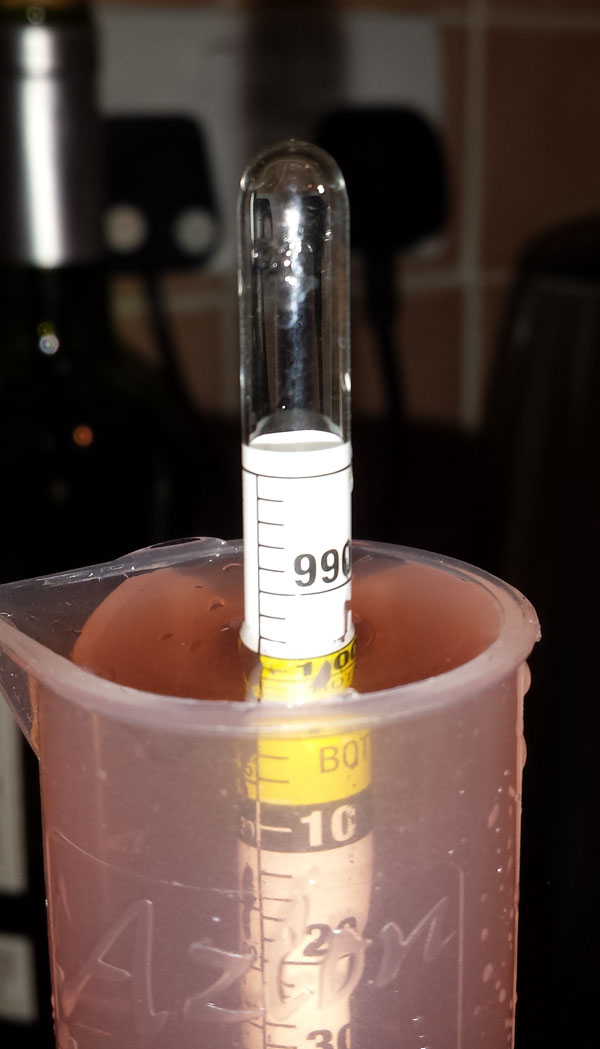Hi all,
Newbie here and currently in dire straits (Mellow dramatic? maybe..).
Around 11 months ago I moved into my new place which had an established grape vine. As I like to try new projects I decided to trymy hand at wine making..
..and so the story begins:
I picked the grapes, seperated out bad and good, pressed the good with a potato masher and at this point the recipe I had found called for water to be added to the jiuce - Note my first (of many) fatal errors - I didn't use the hydrometer before doing this, so my first reading (below) is diluted juice:

Recipe was along the lines of:
1 campden per gallon
170gm suger per litre
24 hours later add yeast.
I left the skins in for a week to develop colour then strained through jelly bag, added campden per gallon.
Put in demijohn with airlock for 6 weeks, re-reacked 2/3 times over the course of the year.
And tonight arrived - The bottling ceremony!
Unfortunately in my haste / idiocy I may have destroyed the past years effort.
So, I tasted the wine a few months back and it was decidely fizzy, I figured this was normal after a little reading and looked into de-gassing when bottling.
So I currently have 9 litres of wine and with this I have added campden tablets and stabilising powder:

Now it clearly states on the above, 1 teaspoon per gallon - So of course I read this as '1 teaspoon per litre'...
Likewise, Campden tablets; 1 tablet per gallon - Again I read this as above...
To top it off in my attempt to 'de-gas' the wine I was rather agressive with the stirring / mixing / wisking and I believe I have more than likely oxidised the crap out of it. The wine is currently in a airlocked fermenting bucket.
Hydrometer reading tonight:

So.....
My questions:
Is the wine recoverable?
If yes, what steps do I need to take to remedy?
Many thanks for getting to the end of this tutorial on 'How not to go about wine making!'.
Any help and advice greatly appreciated!
Ash
Newbie here and currently in dire straits (Mellow dramatic? maybe..).
Around 11 months ago I moved into my new place which had an established grape vine. As I like to try new projects I decided to trymy hand at wine making..
..and so the story begins:
I picked the grapes, seperated out bad and good, pressed the good with a potato masher and at this point the recipe I had found called for water to be added to the jiuce - Note my first (of many) fatal errors - I didn't use the hydrometer before doing this, so my first reading (below) is diluted juice:

Recipe was along the lines of:
1 campden per gallon
170gm suger per litre
24 hours later add yeast.
I left the skins in for a week to develop colour then strained through jelly bag, added campden per gallon.
Put in demijohn with airlock for 6 weeks, re-reacked 2/3 times over the course of the year.
And tonight arrived - The bottling ceremony!
Unfortunately in my haste / idiocy I may have destroyed the past years effort.

So, I tasted the wine a few months back and it was decidely fizzy, I figured this was normal after a little reading and looked into de-gassing when bottling.
So I currently have 9 litres of wine and with this I have added campden tablets and stabilising powder:

Now it clearly states on the above, 1 teaspoon per gallon - So of course I read this as '1 teaspoon per litre'...
Likewise, Campden tablets; 1 tablet per gallon - Again I read this as above...
To top it off in my attempt to 'de-gas' the wine I was rather agressive with the stirring / mixing / wisking and I believe I have more than likely oxidised the crap out of it. The wine is currently in a airlocked fermenting bucket.
Hydrometer reading tonight:

So.....
My questions:
Is the wine recoverable?
If yes, what steps do I need to take to remedy?
Many thanks for getting to the end of this tutorial on 'How not to go about wine making!'.
Any help and advice greatly appreciated!
Ash




